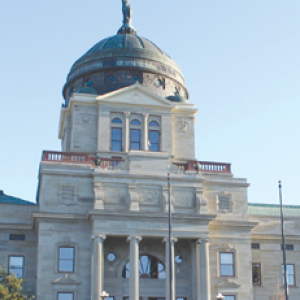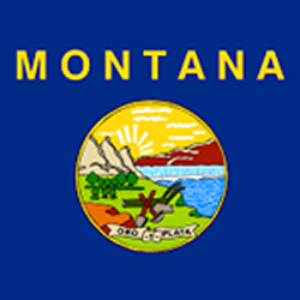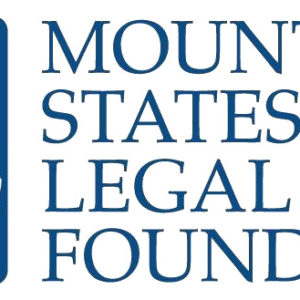Business leaders, farmers, ranchers, and other stakeholders testified on Feb. 9 in support of Governor Greg Gianforte’s Business Investment Grows (BIG) Jobs Act.
A key initiative in Governor Gianforte’s Roadmap to the Montana Comeback budget, the BIG Jobs Act, H.B. 303, would exempt business equipment up to $200,000. The business equipment tax requires small business owners, farmers, and ranchers to value their property, file paperwork, and pay tax on their business equipment. The current exemption is $100,000. This initiative will relieve 4,000 small businesses across Montana of the burden of paying business equipment tax, encouraging those businesses to grow their companies and create jobs.
The BIG Jobs Act, which Rep. Josh Kassmier (R., HD 27) sponsors, has received widespread support from small business owners, farmers, ranchers, and representatives across industries in Montana. Many testified in support of the bill before the House Taxation Committee this morning.
Steve Arveschoug, executive director of the Big Sky Economic Development Council: “This bill…is a really important step forward for Montana’s broader state economy….It has that on-the-ground impact that we really need right now….It means a great deal to the businesses in the communities that I serve in our region in the state of Montana.”
Daniel Brooks, director of business advocacy for Billings Chamber of Commerce: “One of the Billings Chamber’s priorities is to reduce the cost of doing business in Montana, and this bill does just that: reducing taxes and allowing businesses to be able to invest in growth….We also appreciate the backfilling of local revenues to ensure that local governments aren’t burdened with that choice of either raising taxes or cutting services because of changes that happened up in Helena. We’d like to thank the governor for his efforts to reduce the cost of doing business in Montana.”
Jason Brother, CEO of the Lower Yellowstone Rural Electric Cooperative: “HB 303 would be a wonderful addition to attract new businesses and strengthen established businesses in the state. Lower Yellowstone Rural Electric Cooperative supports these bills on behalf of the membership of the cooperative and encourages you to pass them for the great State of Montana.”
Cary Hegreberg, president and CEO of Montana Bankers Associations: “I’m here representing the thousands of small businesses that our bankers around the state serve with commercial loans, deposit accounts, and other services….Any relief that small business in Montana can get will be of great benefit, and we strongly support this bill.”
Cynthia Johnson, farmer, rancher, and vice president of the Montana Farm Bureau Federation: “I speak in favor of HB 303 because of the positive impact to every business in Montana, but especially agriculture….We use a lot of equipment related to our business: tractors, combines, trucks….and we can’t do business without these.”
Tammy Johnson, executive director of Montana Mining Association: “This bill is about our valued associate members: our small businesses who sell everything from pipe, to PPE, to medical equipment….[HB 303] is very valuable for all of those members who support our producers in Montana, and we urge a due pass on this legislation.”
Bridger Mahlum, government relations director for the Montana Chamber of Commerce: “The Montana Chamber has been a strong advocate for the past two decades of lowering or eliminating the business equipment tax….This is a bread-and-butter issue for the many hundreds of members that the Montana Chamber represents, and we would strongly urge you to pass this bill.”
Nicole Rolff, senior director of governmental affairs for Montana Farm Bureau Federation: “We are pleased to be able to support HB 303 this morning….Farming and ranching is a capital intensive business. They often say we’re asset rich and cash poor, because there are a lot of tools that a farmer and rancher needs to run the business….We believe that this bill will encourage investment in two ways: one, reducing the tax burden on farmers and ranchers will allow a farmer to choose to add an additional piece of equipment to their lineup, or it may allow a rancher with a few more extra dollars in his pocket to go and reinvest that in a local community. It’s a win-win.”
Jan Rouse, government affairs specialist for NorthWestern Energy: “We see this bill as providing increased strength to our families, financially, and the economic benefits of businesses. Overall, as a part of this larger package, we see this bill as an optimistic and energetic view of our vision for the state of Montana going forward.”
Elaine Taylor, president and executive director of Montana Beverage Association: “[We’re] supporting HB 303 today and its benefits for businesses in Montana. On a personal note, I’d also like to support 303 for my family ranch on my side, as well as the family ranch on my husband’s side.”
Jason Todhunter, headwaters regional representative of Montana Logging Association: “It’s an exemption, not a threshold, that means everyone gets a little bit of tax relief. It’s going to be a really big deal for the small operators, but everybody will see something out of this, so we urge your support.”
Steve Wade, on behalf of the Montana Contractors Association: “Montana Contractors has memberships of all sizes, and HB 303 is an extremely beneficial piece to assisting those smaller companies that comprise our membership in one, being able to invest in their businesses, but also being able to invest in their employees.”
Jule Walker, field services specialist for the Montana School Boards Association: “Montana School Boards Association supports HB 303 for the targeted tax relief to small businesses. We appreciate that school districts will be reimbursed for that lost revenue. We respectfully request your support for HB 303.”
Gary Wiens, CEO of the Montana Electric Cooperatives’ Association: “HB 303 would…help close the gap between Montana and its neighboring states in its efforts to attract important businesses to our state. The Montana Electric Cooperatives’ Association supports these bills on behalf of the membership, which provide power in every county in Montana, and encourages you to pass them for the great State of Montana.”
Ronda Wiggers, representing Montana Coin Machine Operators, Montana Water Well Drillers Association, Helena Chamber of Commerce, and the National Federation of Independent Business: “When I sent these bills out ten days ago to the business associations that I represent, they unanimously asked me to come before you and support lowering their taxes….This money in the pockets of our small businesses being able to spend it on the things they need to keep their businesses going is very important for our local economies. The associations I represent would ask for a due pass.”



